- Deutsch
-
EnglishDeutschItaliaFrançais日本語한국의русскийSvenskaNederlandespañolPortuguêspolskiSuomiGaeilgeSlovenskáSlovenijaČeštinaMelayuMagyarországHrvatskaDanskromânescIndonesiaΕλλάδαБългарски езикAfrikaansIsiXhosaisiZululietuviųMaoriKongeriketМонголулсO'zbekTiếng ViệtहिंदीاردوKurdîCatalàBosnaEuskeraالعربيةفارسیCorsaChicheŵaעִבְרִיתLatviešuHausaБеларусьአማርኛRepublika e ShqipërisëEesti Vabariikíslenskaမြန်မာМакедонскиLëtzebuergeschსაქართველოCambodiaPilipinoAzərbaycanພາສາລາວবাংলা ভাষারپښتوmalaɡasʲКыргыз тилиAyitiҚазақшаSamoaසිංහලภาษาไทยУкраїнаKiswahiliCрпскиGalegoनेपालीSesothoТоҷикӣTürk diliગુજરાતીಕನ್ನಡkannaḍaमराठी
Leitfaden für Grafikkartenfunktionalität und Dynamik
- 2024/11/27
- 296
Katalog

Überblick über Grafikkarten
Eine Grafikkarte, auch als Grafikkarte, Anzeigeadapter oder Videobeschleuniger bezeichnet, ist eine wichtige Komponente in PCs.Es spielt eine große Rolle bei der Konvertierung der Displayinformationen aus dem Computersystem, um den Monitor voranzutreiben, und erleichtert die Kommunikation zwischen der PC -Motherboard und dem Display.Abgesehen von seiner Hauptaufgabe bei der visuellen Ausgabe besitzen moderne Grafikkarten integrierte parallele Computerfunktionen und machen sie für Anwendungen wie Deep Learning und Hochleistungs-Computeraufgaben zu.
Die Kernverarbeitungseinheit der Grafikkarte wird als Grafikverarbeitungseinheit (GPU) bezeichnet.Dieser Begriff wurde erstmals von NVIDIA mit der Veröffentlichung der GeForce 256 eingeführt. GPUs reduzieren die Last der CPU, indem sie auf Aufgaben abwickeln, die traditionell vom Prozessor verwaltet werden, insbesondere in grafischintensiven Operationen wie 3D-Rendern.Einige mit der GPU verbundene Technologien umfassen Hardware-T & L (Transformation und Beleuchtung), kubische Texturzuordnung, Scheitelpunkt-Mischung, Texturkomprimierung und erweiterte Rendering-Techniken wie die Doppeltextur-Vier-Pixel-256-Bit-Motoren.Die Funktionen dieser GPUs bestimmen die 3D -Spezialeffekte, die die Karte mit unterschiedlichen Anzeigechips verarbeiten kann, die verschiedenen Leistungsstufen entsprechen, wie z.
Funktionalität und Dynamik von Grafikkarten
Grafikkarten werden in der Regel in Expansionsstätten auf dem Motherboard eingefügt, wobei moderne Systeme mit PCI-E-Slots (obwohl ältere Systeme AGP-, PCI- oder ISA-Slots verwendeten).Ihre Hauptfunktion besteht darin, die von der CPU erzeugten Anzeigesignale in elektrische Signale umzuwandeln, die der Monitor interpretieren kann.Zu den Komponenten der Grafikkarte gehören das Motherboard, den Anzeigechip, die Anzeigespeicher, den Kühler und andere Teile.Die wichtigste Komponente, der Video -Chipsatz (auch als GPU oder VPU bezeichnet) fungiert als primäre Verarbeitungseinheit der Karte.
Frühe Grafikkarten wurden hauptsächlich für die Signalumwandlung entwickelt.Zeitgenössische Grafikkarten konvertieren jedoch nicht nur Display -Signale, sondern bieten auch 3D -Grafikbeschleunigung an, was dazu führt, dass sie als "Grafikbeschleunigungskarten" oder "3D -Beschleunigungskarten" bezeichnet werden.Die ersten weit verbreiteten Grafikkarten wie MDA und CGA 2D Accelerator Cards wurden 1981 mit dem 5150 PC von IBM eingeführt. Eine moderne Grafikkarte besteht aus verschiedenen Komponenten, darunter eine Busoberfläche, PCB -Board, Anzeigechip, Videospeicher, RAMDAC, RAMDAC,VGA -BIOS und Videoausgangsschnittstellen.Diese Karten enthalten normalerweise ein oder mehrere Video -Schnittstellen wie VGA, DVI, HDMI oder DisplayPort, um eine Verbindung zu Anzeigen herzustellen.
Einzelheiten moderner Grafikkartenkomponenten
Im Kern einer Grafikkarte liegt die PCB -Karte, eine hoch entwickelte Struktur, die verschiedene Komponenten befindet.Dazu gehören GPUs und Videospeicher sowie integrierte Schaltungen wie RAMDACs zum Konvertieren digitaler Signale in die von bestimmten Geräten erforderlichen analogen Ausgänge.Grafikkarten sind auch mit BIOS-Chips ausgestattet, was den Stiefelanweisungen ermöglicht.Moderne Grafikkarten unterstützen eine Vielzahl von Schnittstellen wie VGA, DVI, HDMI und DisplayPort, um die Kompatibilität mit einer umfangreichen Reihe von Anzeigegeräten und -konfigurationen sicherzustellen.Diese Anpassungsfähigkeit ermöglicht kundenspezifische Setups und erfüllt unterschiedliche Benutzeranforderungen.
Wenn Sie mit einem schnellen technologischen Fortschritt Schritt halten, ist es ein rezidivierendes Aspiration von Grafikkarten, um frühere Grenzen für Rendering, Verarbeitungseffizienz und Energieverbrauch zu überwinden.Einblicke in drohende Innovationen deuten auf Verbesserungen in Architektur und Materialien hin, die möglicherweise die Fähigkeiten in virtuellen und erweiterten Reality -Landschaften erweitern.
Fortschritte in der Grafiktechnologie "
Die Grafiktechnologie hat sich schnell weiterentwickelt und alles von Spielerlebnissen bis hin zu professionellem visuellem Design und darüber hinaus gestaltet.Dieses Feld umfasst hochmoderne Innovationen in Computergrafiken, visuellem Rendering und der Hardware, die qualitativ hochwertige Visuals anbietet.Mit Fortschritten in GPUs, Echtzeit-Rendering und virtueller Realität überschreitet die Grafiktechnologie weiterhin die Grenzen dessen, was in digitalen visuellen Erlebnissen möglich ist.
Integrierte Grafiken
Integrierte Grafikkarten kombinieren den Display -Chip, den Videospeicher und die verwandten Schaltungen auf dem Motherboard selbst und integrieren häufig den Display -Chip in den Northbridge -Chip.Diese Karten bieten eine geringere Leistung im Vergleich zu diskreten Grafikkarten, bieten jedoch eine energieeffiziente Lösung mit minimaler Wärmeerzeugung.Während die Leistung begrenzt ist, können einige integrierte Grafiklösungen mit dedizierten Grafikkarten der Einstiegsklasse konkurrieren.Integrierte Grafiken können jedoch nicht unabhängig verbessert werden.Während einige Leistungsverbesserungen durch Software wie Übertakten oder BIOS -Updates erzielt werden können, sind Hardware -Upgrades nicht möglich.Integrierte Grafiken werden häufig in Budget- oder Low-Power-Systemen bevorzugt.
Spezielle Grafiken
Dedizierte Grafikkarten sind separate, unabhängige Einheiten, die ihren eigenen Display -Chip, Videospeicher und verwandte Komponenten enthalten.Diese Karten sind in Expansionsstätten wie PCI, AGP oder PCI-E installiert.Der Hauptvorteil dedizierter Grafiken ist die Verwendung des unabhängigen Videospeichers, was bedeutet, dass der Systemspeicher nicht gemeinsam genutzt wird.Dies ermöglicht eine bessere Leistung im Vergleich zu integrierten Grafiken.Dedizierte Grafikkarten sind in verschiedenen Formularen erhältlich: gamingorientierte Grafikkarten und professionelle Grafikkarten für Aufgaben wie 3D-Rendering.Die Hauptnachteile sind erhöhter Stromverbrauch, höhere Wärmeerzeugung und höhere Kosten, insbesondere für High-End-Modelle.In tragbaren Systemen wie Laptops nehmen dedizierte Grafikkarten auch mehr Platz ein.
Kerngrafiken
Core Graphics, entwickelt von Intel, stellen den neuesten Fortschritt in der Grafikverarbeitung dar.Im Gegensatz zu herkömmlichen Grafikkarten integriert Intel den Grafikkern direkt in den Prozessor.Dieses Design verringert die Zeit, die die Daten zwischen Prozessor, Grafikkern und Speicher übertragen, die Verarbeitungseffizienz verbessern und den Stromverbrauch senken.Kerngrafiken sind für mobile Geräte wie Laptops und All-in-Ones von Vorteil, bei denen Energieeffizienz und kompaktes Design von entscheidender Bedeutung sind.Kerngrafiklösungen sind ideal für diejenigen, die ein Gleichgewicht zwischen Grafikleistung und Energieeffizienz benötigen, z.
Anatomie von Grafikkarten
Eine Grafikkarte ist ein wichtiger Bestandteil des modernen Computers, der für die komplexe Aufgabe des Renderns von Bildern, Videos und Animationen entwickelt wurde.Jeder Teil der Grafikkarte trägt zu seiner Funktionalität bei und stellt eine reibungslose und qualitativ hochwertige visuelle Ausgabe sicher.Unten finden Sie eine detailliertere Aufschlüsselung der Schlüsselkomponenten:
Kondensatoren
Kondensatoren stabilisieren und regulieren die Stromversorgung innerhalb der Grafikkarte.Sie spielen eine große Rolle bei der Aufrechterhaltung der Signalintegrität und beim Schutz empfindlicher Komponenten vor Spannungsschwankungen.Hochwertige Kondensatoren sind wichtig, da sie die allgemeine Zuverlässigkeit, Haltbarkeit und Leistung der Karte bestimmen.Kondensatoren in schlechter Qualität können zu grafischen Störungen oder sogar zu Hardwarefehlern führen.
Videospeicher (VRAM)
Videospeicher speichert die Daten, die die GPU zum Verarbeiten von Bildern und zur Rendern von Grafiken benötigt.Es fungiert als Puffer zwischen der GPU und der Anzeige, hält Texturen, Shader und Rahmenpuffer.Moderne Grafikkarten verwenden normalerweise DDR6- oder DDR5 -VRAM, wobei die Kapazitäten je nach Leistungsstufe von 2 GB bis 24 GB reichen.Größere VRAM-Kapazitäten sind für ressourcenintensive Aufgaben wie Gaming bei 4K-Auflösung, 3D-Rendering oder Umgang mit komplexen CAD-Anwendungen von Vorteil.
GPU (Grafikverarbeitungseinheit) und Kühllüfter
Die GPU, die häufig als "Gehirn" der Grafikkarte bezeichnet wird, führt den Großteil der Rechenaufgaben aus, einschließlich der Rendern von 3D -Grafiken, Anwenden von Texturen und Verarbeitung komplexer visueller Effekte.GPUs sind für die parallele Verarbeitung ausgelegt, wodurch sie für Aufgaben wie maschinelles Lernen und Videobearbeitung hocheffizient sind.Sie erzeugen jedoch während des Betriebs erhebliche Wärme.Kühlmechanismen wie Lüfter oder Flüssigkühlsysteme sorgen dafür, dass die GPU innerhalb sicherer Temperaturgrenzen arbeitet, um die Leistung aufrechtzuerhalten und thermische Drosselung zu verhindern.
Grafikkartenschnittstelle
Diese Schnittstelle verbindet die Grafikkarte mit dem Motherboard und dient als Kommunikationsweg für die Datenübertragung zwischen beiden.Gemeinsame Schnittstellen umfassen:
- PCI (Interconnect -Peripheriekomponenten): ein älterer Standard mit begrenzter Bandbreite.
- AGP (Beschleunigter Grafikport): entwickelt für eine schnellere Datenübertragung, aber jetzt veraltet.
- PCI-E (PCI Express): Der aktuelle Standard, der Hochgeschwindigkeitsdatenübertragung und Unterstützung für moderne GPUs bietet.PCI-E-Schnittstellen reichen von X1 bis x16, wobei X16 die maximale Bandbreite für Hochleistungsgrafikkarten darstellt.
Periphere Schnittstellen
Diese Schnittstellen ermöglichen die Verbindung zwischen der Grafikkarte und den externen Anzeigegeräten.Gemeinsame Optionen sind:
- VGA (Videografikarray): Eine analoge Schnittstelle, die jetzt weitgehend veraltet ist.
- DVI (Digital Visual Interface): Ein digitaler Standard, der in vielen Legacy -Systemen verwendet wird.
- HDMI (hochauflösende Multimedia-Schnittstelle): Die Verbindung zu modernen Monitoren, Fernsehgeräten und Projektoren, die Audio- und hochauflösende Videos unterstützen.
- DisplayPort (DP): Eine vielseitige digitale Schnittstelle, die häufig für hochauflösende und hochauflösende Anzeigen bevorzugt wird.
Die Vielfalt der Output -Schnittstellen sorgt für die Kompatibilität mit einer breiten Palette von Geräten.
Brückenschnittstelle
Diese Komponente wird auf Grafikkarten mit mittlerer bis hoher Endung gefunden und ermöglicht Multi-GPU-Setups wie die SLI-SLI (skalierbare Link-Schnittstelle) oder die Crossfire-Technologie von AMD.Durch die Verbindung von zwei oder mehr Grafikkarten bieten diese Setups eine erhöhte grafische Leistung, insbesondere für anspruchsvolle Aufgaben wie 4K -Spiele oder professionelles Rendering.Die Brücke sorgt für eine effiziente Kommunikation zwischen GPUs und synchronisiert ihre Ausgaben für eine optimale Leistung.
Grafikkartenschnittstellenstandards
Grafikkarten verwenden verschiedene Busoberflächen, um mit dem Motherboard des Systems zu kommunizieren.Im Laufe der Zeit haben sich diese Schnittstellen entwickelt, um mit den zunehmenden Anforderungen der modernen Grafikverarbeitung Schritt zu halten.
- ISA Graphics Card: Eine ältere Schnittstelle, die jetzt veraltet ist und hauptsächlich in frühen PCs verwendet wird, um VGA -Monitore zu unterstützen.
- Vesa Graphics Card: Der VESA Local Bus (VLB), der 1989 von der Video Electronics Standards Association (VESA) eingeführt wurde, lieferte eine 64-Bit-Architektur, die von PCs Anfang der 90er Jahre verwendet wurde.
- PCI -Grafikkarte: Die Interconnect-Schnittstelle (Peripheral Component Interconnect) erlangte Mitte der 90er Jahre Popularität und wurde im frühen Pentium II-ERA häufig verwendet.Die PCI -Schnittstelle wurde auch nach Einführung von AGP -Slots verwendet.
- AGP -Grafikkarte : Der beschleunigte Grafikport (AGP) wurde 1996 entwickelt, um die Grafikleistung zu verbessern.AGP lieferte schnellere Datenübertragungsgeschwindigkeiten, wobei die Versionen von AGP 1x bis AGP 8x reichten.Obwohl AGP-Karten jetzt weitgehend veraltet sind, waren sie einst der Standard für Hochleistungsgrafiken in Desktop-Systemen.
- PCI Express -Grafikkarte: PCI-E, die neueste und fortschrittlichste Grafikkartenschnittstelle, bietet deutlich höhere Datenübertragungsraten als AGP und PCI.PCI-E unterstützt Anwendungen mit hoher Bandbreite wie 3D-Rendering und Videobearbeitung.Viele moderne Grafikkarten, wie das Duo von Nvidia Titan V und AMD Radeon Pro, sind für ihre überlegene Leistung auf PCI-E angewiesen.
- Externe PCI Express -Grafikkarte: Externe GPU -Lösungen stellen über USB- oder Thunderbolt -Kabel an einen Computer her.Diese externen Gehäuse ermöglichen es Benutzern, die grafischen Funktionen eines Systems zu verbessern, ohne den Fall öffnen zu müssen, obwohl sie in der Regel eine unabhängige Stromversorgung für den Betrieb erfordern.
Häufig gestellte Fragen [FAQ]
1. Was ist eine Grafikkarte in einem PC?
Eine Grafikkarte (GPU) ist eine spezialisierte Komponente, die die Erstellung und Anzeige von Bildern, Videos und Animationen übernimmt.Es führt komplexe Berechnungen durch, um Visuals zu rendern, sodass sich die CPU auf andere Aufgaben konzentrieren kann.
2. Welche Grafikkarte eignet sich am besten zum Spielen?
Top Gaming -Grafikkarten für 2021:
- GeForce RTX 3080 - Beste insgesamt für 4K -Spiele.
- Radeon RX 6800 XT - Beste AMD -Karte ohne DLSS.
- GeForce RTX 3090 - schnellste Karte, ideal für Schöpfer.
- GeForce RTX 3060 Ti-Beste für Hochleistungsspiele.
- GeForce RTX 3070 - Toller Wert für 1440p und 4K -Spiele.
- Radeon RX 6700 XT-Solid AMD-Auswahl für Mid-Range Gaming.
- Radeon RX 6800 - Ausgewogene Leistung und Preis.
- GeForce RTX 3060 12 GB - Gutes Preis -Leistungs -Verhältnis für Budgetspieler.
3. Wofür wird eine Grafikkarte verwendet?
Eine Grafikkarte wird verwendet, um Bilder auf Ihrem Bildschirm zu rendern und anzuzeigen.Es ist wichtig für Spiele, Videobearbeitung, 3D -Rendering und Aufgaben wie Kryptowährungsabbau.
4. Kann eine Grafikkarten brechen?
Ja, Grafikkarten können scheitern, wenn ihre Komponenten überhitzen oder beschädigt sind.Obwohl moderne Karten mit Kühlfunktionen ausgestattet sind, kann übermäßige Wärme langfristige Schäden verursachen, was zu einem Scheitern führt.
5. Benötigen Sie eine Grafikkarte für die Verwendung von Nicht-Gaming?
Nicht unbedingt.Wenn Sie nicht spielen, kann ein PC weiterhin mit einer integrierten GPU (IGPU) funktionieren, die in den Prozessor integriert ist.Für Aufgaben wie Videobearbeitung oder Grafikdesign wird jedoch eine dedizierte Grafikkarte empfohlen.
Verwandter Blog
-
Netzteilspannung Abkürzung: VCC VDD VEE VSS GND
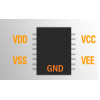
2024/06/6
Im modernen elektronischen Schaltungsdesign, Verständnis der Abkürzungen der Stromversorgungsspannung (wie VCC, VDD, VEE, VSS, GND).Diese Abkürzung... -
Ein Überblick über TTL- und CMOS -ICs und wie Sie zwischen ihnen wählen

2024/04/13
In diesem Artikel werfen wir einen detaillierten Blick auf zwei wichtige elektronische Technologien, komplementäre Metaloxid-Halbleiter (CMOS) und Tr... -
Verschiedene Arten von Sicherungen und Anwendungen

2024/04/18
Sicherungen sind wesentliche Komponenten in modernen elektrischen Systemen und fungieren als entscheidende Beschützer vor Überstrom.Sie arbeiten, in... -
Verständnis des C1815 -Transistors: Pinouts, Schaltungssymbole, Anwendungsschaltungen
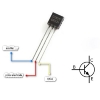
2023/12/20
Welche Art von Röhre ist der C1815?C1815 Triode PinoutC1815 ModellzeichnungC1815 -ParameterC1815 EigenschaftenAnwendung von C1815 Der C1815 -Transist... -
LR44 -Batterien: LR44 -Batterieäquivalente und LR44 -Batterieersatz
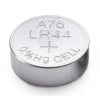
2024/01/24
In einem sich schnell entwickelnden technologischen Gebiet, in dem die Größe der elektronischen Geräte weiter schrumpfen und dennoch alltäglicher ... -
Leitfaden zu Buck-, Boost- und Buck-Boost-Konverter

2023/12/21
Was ist ein Buck -Konverter?Wie funktioniert ein Buck Converter?Was ist ein Boost -Konverter?Wie funktioniert ein Boost -Konverter?Was ist ein Auftrie... -
Gesamtzahl der Transistoren in einer CPU
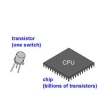
2024/06/14
In der modernen Computertechnologie ist die Beziehung zwischen der zentralen Verarbeitungseinheit (CPU) und den Transistoren zunehmend integraler gewo... -
Grundkenntnisse über Sicherungen: Merkmale, Arbeitsprinzipien, Typen und wie man richtig auswählt
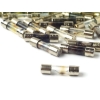
2024/04/10
Sicherungen schützen Schaltungen vor Schäden aufgrund von Überlastung oder Kurzstrecken.Dieses einfache, aber geniale Gerät basiert auf einem leic... -
Wie viele Spannungen sollte eine Autokatterie haben?

2024/08/25
Ist es wirklich genug zu sagen, dass eine Batterie bei 11,9 Volt oder höher "vollständig aufgeladen" ist?Diese Zahl bietet eindeutig eine Grundlinie... -
Grunde elektronische Grundkomponenten verstehen - Widerstände, Kondensatoren, Dioden, Transistoren, Induktoren und digitale Logik -Tore
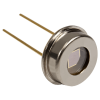
2024/04/13
Elektronische Komponenten sind der Eckpfeiler des Bauens und der Optimierung elektronischer Schaltkreise.Von gewöhnlichen Haushaltsgeräten bis hin z... -
Beherrschen analoge und digitale Schaltungen: Ein Anfängerführer

2023/12/20
Definition und Eigenschaften von analogen Schaltungen und digitalen SchaltungenDer Unterschied zwischen analogen Schaltungen und digitalen Schaltungen... -
Beschreiben Sie kurz die Spezifikationen, Verpackungen, das Arbeitsprinzip, die Vorteile und die Umweltauswirkungen von Lithium-Ionen-Batterien
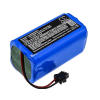
2024/03/20
Seit der Einführung von wiederaufladbaren Blei-Säure-Batterien im Jahr 1859 wurden sie allmählich in den Gewebe des technologischen Fortschritts ei... -
Transistor (BJT und MOSFET) Arbeitsprinzipien

2023/12/20
Arbeitsprinzip des bipolaren Junction -Transistors (BJT)Auswahl der KomponentenwerteWie wählen Sie einen Transistor?Arbeitsprinzip von MOSFETWie scha...
Heiße Teile
- C5750C0G3A153J280KC
- GJM0335C1E6R0DB01D
- CC0603JRNPO8BN821
- 08055A180KAT2A
- GRM0337U1H8R9DD01D
- GRM1887U1H2R2CZ01D
- TPST225M016R2000
- 964314-1
- LQP03HQ4N7H02D
- CDCUA877ZQLR
- ADS7813PG4
- AD5624RBRMZ-3REEL7
- STGD6NC60HDT4
- EP2S30F672C5
- EP20K1000EFC672-2
- AD8056ARZ-REEL
- LC4256V-75TN176C
- MD0105K6-G
- UCC28C44DR
- LTC3631IDD-5#PBF
- AP2820AMMTR-G1
- CRT0603-BY-1002ELF
- RT0603BRD07820RL
- LT6658AHMSE-2.5#PBF
- MBN1200E33C
- STE250N06
- MBM29F160BE-90PFTN
- UPD63991AGF-3BA
- SSM4567ACBZ-R7
- LC98500DT-07E-E
- AM27C040-150JC
- LRS1316A
- TXC-05802BIPQ
- CMX865D2
- SE5003L1-R
- MP1010BEF-C108-LF-Z
- ICS93737BF
- M30302GCP-053FP
- R1LV1616RBA-5SI
- LV4135W-TBM
- KBE00S003M-D411
- 2SB1115-T1-AZ
- LGPCMX05A
- APA3002QCAI-TRL
- M38184MA-160
- VT1818SG
- KS0550-A-TLM-E
- TG110-S055P2RL


